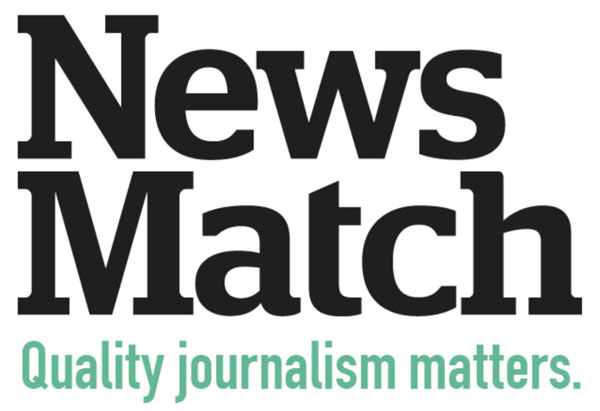
May 14, 2019; Nieman Lab
While trend reports indicate a general decline in donations from low- and middle-income households, some are busy trying to interest those same households in new propositions—in this case, the news. As NPQ readers are probably aware, hundreds of nonprofit news sites are being established all across the country. Some are high-dollar conversions of established news sites, but more of them are starting a new kind of coverage that responds to a specific community or topic. And, as the number of those sites grow, so do their needs for local community support.
A new Learning Report by NewsMatch, a challenge gift program for nonprofit news sites, reveals that the program is proving extremely helpful in the development of mixed revenue bases. The program, which is housed at the Miami Foundation, is a pooled fund. It works by providing matches for gifts from individuals to participating news sites, incentivizing giving.
In November and December of last year, the period for which the matches are available, the program helped attract gifts from more than 240,000 donors, with 52,000 of them giving to a nonprofit news site for the first time. Over the whole of 2018, NewsMatch helped to raise $7.6 million spread across 157 sites.
Sign up for our free newsletters
Subscribe to NPQ's newsletters to have our top stories delivered directly to your inbox.
By signing up, you agree to our privacy policy and terms of use, and to receive messages from NPQ and our partners.
 NewsMatch has been adjusting the program along the way, and among the changes made this year is the addition of a bonus for small news sites that grew their fundraising capacity significantly, and providing a match for a full year’s value of a pledged recurring gift.
NewsMatch has been adjusting the program along the way, and among the changes made this year is the addition of a bonus for small news sites that grew their fundraising capacity significantly, and providing a match for a full year’s value of a pledged recurring gift.
It has also prioritized newsrooms led by people of color, increasing the number of those from seven to 17 between 2017 and 2018. In fact, as per the report:
Many of the newsrooms who earned bonuses in 2018 were focused on underserved communities or led by people of color. However, these newsrooms raised less money than many of their counterparts, and these overall results reinforce what we know: these critical news outlets face large structural challenges. NewsMatch is only a partial answer, but we have to continue to improve access and support full participation for these outlets in particular. We must do more to engage, listen, and serve these newsrooms, especially in light of longstanding inequities in how philanthropy has funded these organizations and communities historically.
The report says that other, more specifically focused “partner funds” can be set up at the Miami Foundation, but also that some newsrooms are establishing relationships with their local funders to augment the larger pool.—Ruth McCambridge













